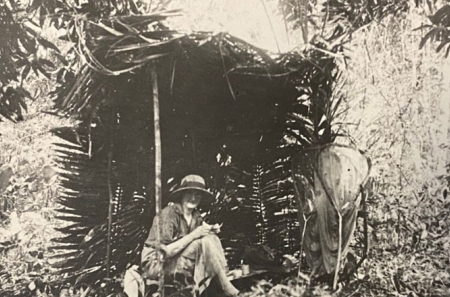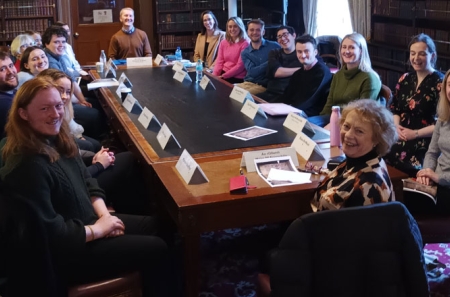
My favourite item ...
02 July 2021Latest Library Blog post. Assistant Librarian, Sophie Evans, shows us her favourite item from the Library's collections.
My favourite item in the library is small and unassuming and resides in a box on the Reading Room Gallery. It is part of the Academy Pamphlet Collection and was printed in Carmarthen, South Wales, in 1856. I like the thought that we both started life in Carmarthenshire and somehow, by chance, ended up in the hushed Reading Room of the Royal Irish Academy.
William Spurrell’s A Welsh and English primer containing easy lessons in both languages is only 17cm tall and runs to just 30 pages but it’s a delight. A primer is a textbook which serves as an introduction to a subject of study or for teaching children to read. This little primer, in Welsh and English, was created to help Welsh children read English. The flysheet has the following quote:
‘It would require far less toil for children to learn English, with their reason working through the medium of their own language, than to do so as a matter of rote. Again, the habit of construing would be in itself a most valuable instrument of Education.’
Author of Lays from the Cimbric Lyre.
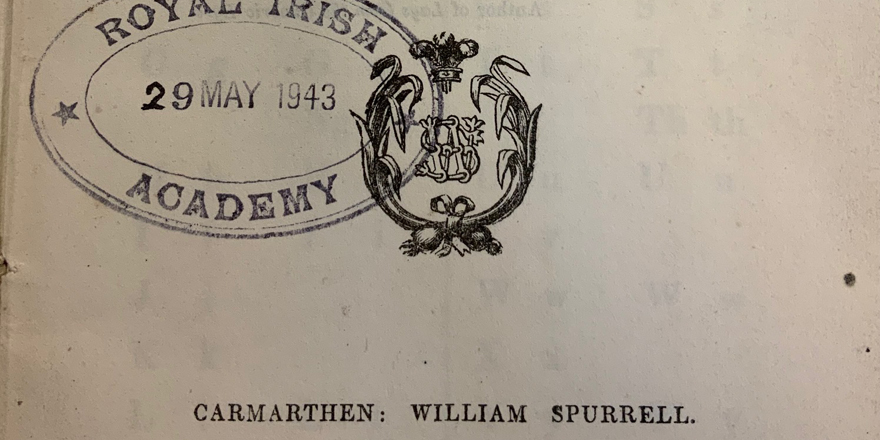
The pamphlet includes a page or two on various subjects, giving a brief description, alternately in Welsh and English, with translations of key phrases. Each subject has its own little engraving at the head. We begin with the sparrow, which ‘hops on the ground and chirps merrily’. The description also tells us that the sparrow builds its nest in old walls or in the roof of a house. The Welsh word for sparrow is deryn y to, which literally translates into ‘bird of the roof.’
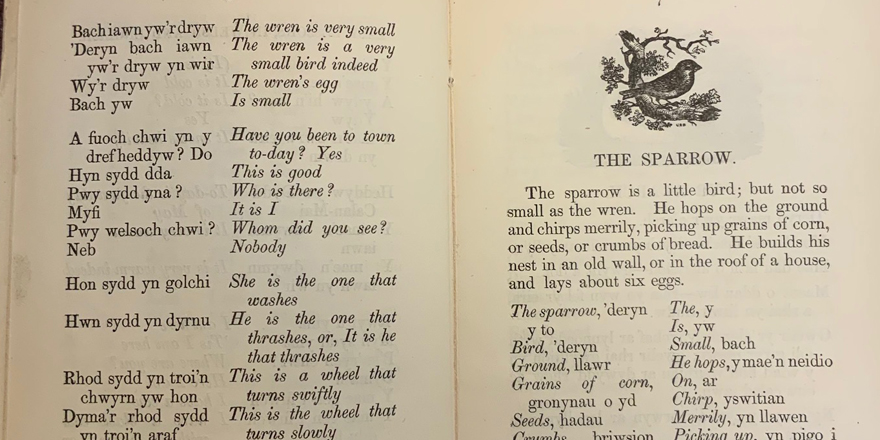
On the whole, subjects covered in the primer would be common and well known to its young audience - The swan (Yr alarch), Church (not Chapel!?), Melin (Mill), The horse; School-house, Ty ffarm (farmhouse), The beehive, Y fuwch (The cow). But there, in between the horse and the school house we find the Camel, certainly not indigenous to Wales!
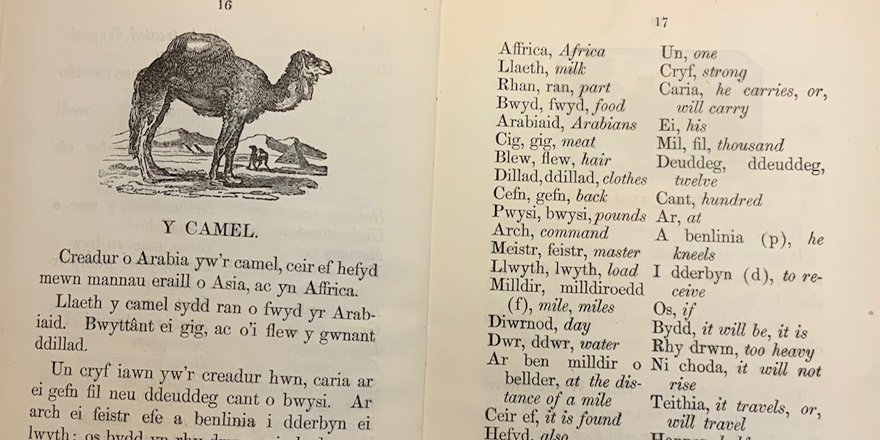
The final lesson is another exotic animal – The Lion (Y Llew). There is much made of the lion appearing in Bible, which is where the young reader may have first become familiar with the animal.
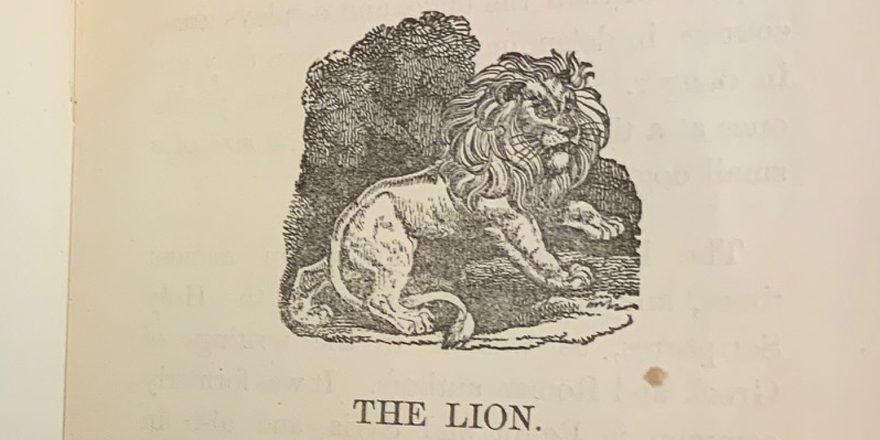
At the beginning of the pamphlet there is a page dedicated to various useful sayings. Most are mundane, everyday sayings – Y mae’n oer (it is cold), ‘Rwyf fi yma (I am here) – but there, at the end of the page the rather heavy Mawr yw fy mhoen (Great is my pain).
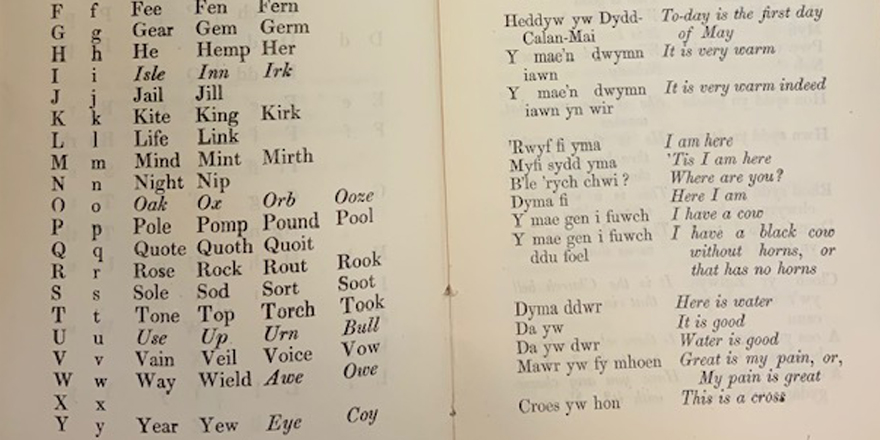
My time at the Academy Library is almost up and I’m heading back over the water, closer to Wales. My favourite item will remain in its box on the shelf. I would like to take this opportunity to say a sincere thank you to my Academy colleagues and all the wonderful Readers and researchers I have worked with over the last 16 years. I will miss you all. It’s been a pleasure. Go raibh míle maith agaibh / Diolch yn fawr.
Sophie Evans
Assistant Librarian

